Have you ever wondered what the best tubeless sealant is? Well, if you have, you've come to the right place.
We've carried out a series of controlled tests to try to find out which tubeless tyre sealant is the best at sealing holes in your tyre.
There are a number of different options when it comes to which sealant to use in your tubeless road tyres or mountain bike tyres.
If you're new to the world of tubeless tyres, we have an explainer on tubeless tyres that tells you everything you need to know, as well as a guide on how to repair a punctured tubeless tyre.
We also have a guide to the best tubeless pumps and inflators. Elsewhere, we explored whether tubeless sealant is bad for the environment.
You can jump to our buyer's guide to tubeless sealants at the end of this article to find out more about the different sealant formulas.
The best tubeless sealants in 2025
Effetto Mariposa Caffélatex

- £20/$28.99 for one litre as tested
The Effeto Mariposa Caffélatex is one of the cheapest and most effective tubeless sealants.
The low-viscosity foaming solution plugs hard-to-reach sidewall punctures with the least air loss. It sealed holes made by a 6mm screwdriver with 10psi air loss.
But the Effeto Mariposa Caffélatex couldn’t plug a 6mm hole as quickly as Stan’s Race Sealant.
Nor could the sealant block a hole made by an 8mm screwdriver, but that's not uncommon.
Additives are available from Effetto that are claimed to increase the effectiveness of Caffélatex with larger holes, though.
Silca Ultimate Tubeless Sealant
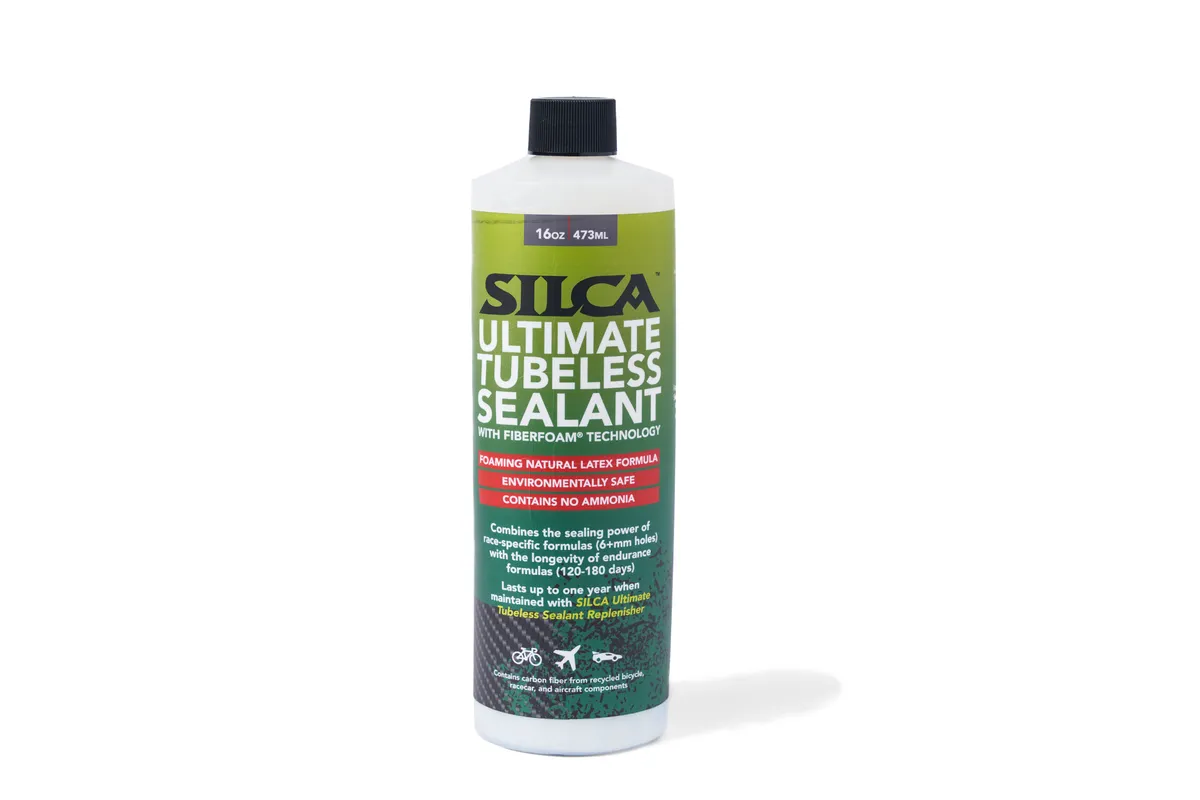
- £28/£37/€30 as tested (473ml)
Silca says its Ultimate Tubeless Sealant should be put in the tyre before seating. If you use a syringe to add it through the valve once the tyre has been seated it “will plug any syringe or valve hole you try to pump it through”.
The Ultimate Tubeless Sealant lived up to this claim in testing. The use of a range of fibre lengths sealed holes consistently fast regardless of size.
Silca states the Ultimate Tubeless Sealant is environmentally safe and ammonia-free, but contains latex.
Stan’s No Tubes Race Sealant

- £32/$39 for 946ml as tested
Stan's No Tubes Race Sealant is one of the most effective sealants we've tested.
It plugged holes made by a 6mm-diameter screwdriver with minimal fuss, only losing 5psi from the starting pressure of 30psi, and holding 30psi after sealing.
The relatively runny solution sealed sidewall holes quickly too. All punctures were plugged with minimal leaking.
When we tested a number of sealants, it was the only one to plug a hole made by an 8mm screwdriver, which it managed after three rotations of the wheel.
But it is considerably more expensive than some sealants that perform almost as well. So, we’d recommend Stan’s Race Sealant for keen racers or regular tyre-rippers.
Finish Line FiberLink Tubeless Sealant
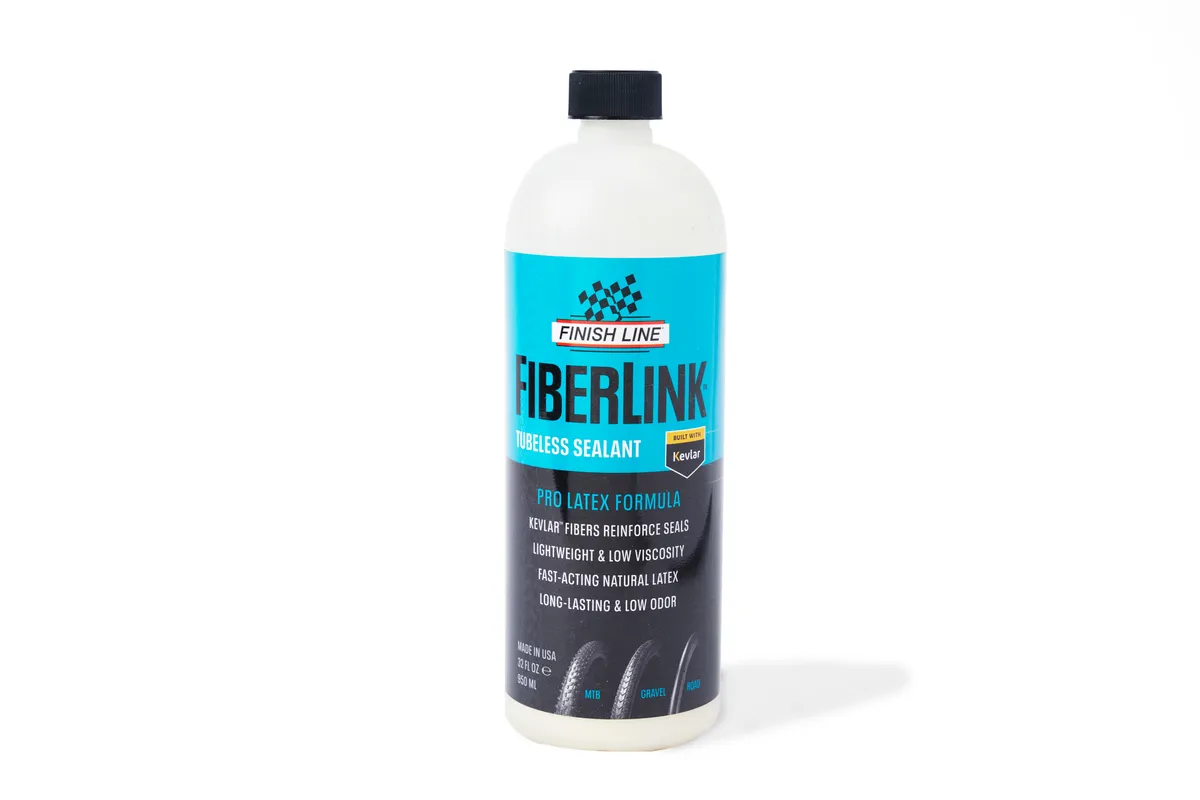
- £39.99/$39.99 as tested (960ml)
Finish Line's FiberLink tubeless sealant plugged pin holes and repeated knife stabbings with no leakage.
Sidewall protection from FinishLine's premium tubeless sealant is excellent.
FiberLink sealed sharpened screwdriver attacks unless two parallel incursions were within 10mm of one another.
Finish Line says the FiberLink tubeless sealant will work on almost any bike.
Finish Line FiberLink contains ammonia and latex. According to the safety sheet, you should avoid letting the sealant run into waterways or sewers.
Also consider
These sealants scored fewer than four stars in our testing, but are still worth considering if they meet your needs and budget.
BatSeal Tyre Sealant
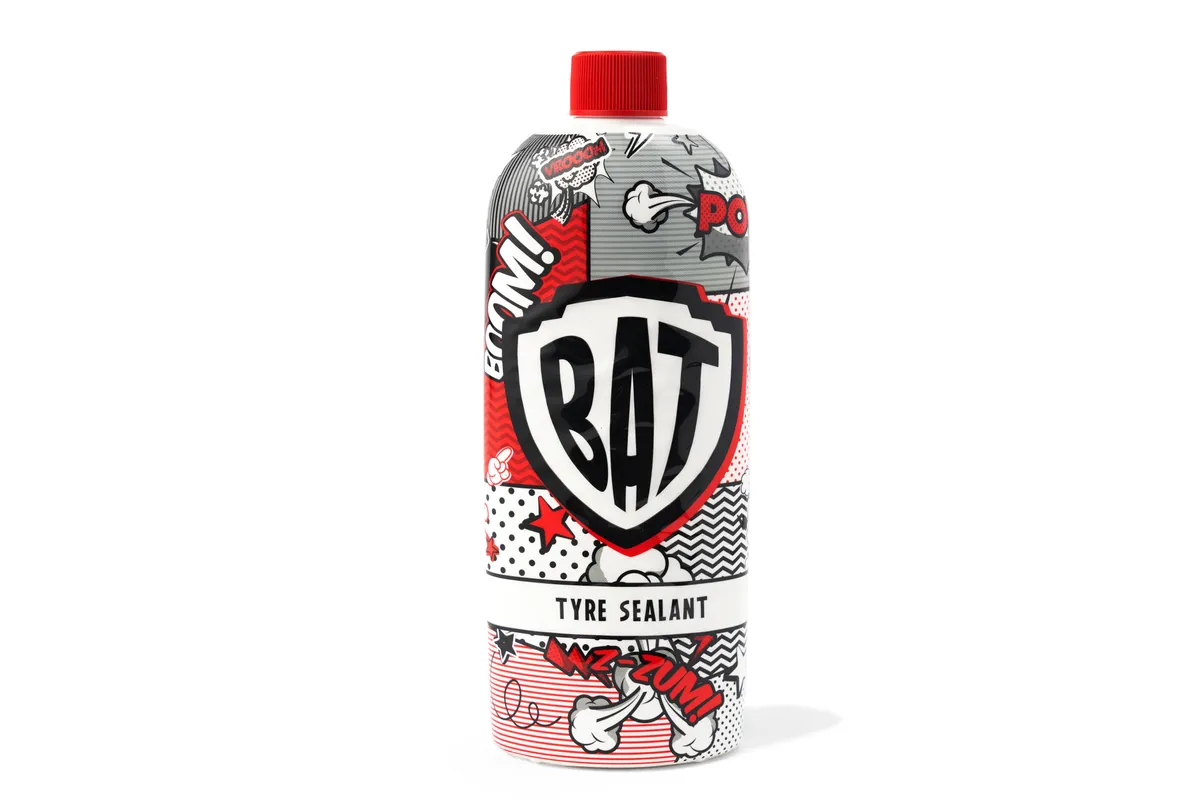
- £14.99 as tested (400ml)
BatSeal tyre sealant sealed 35 pin-prick holes in quick succession with no obvious leakage.
While performance against smaller intrusions was impressive, BatSeal did less well with breaches above 4mm.
It sealed the hole but only when the pressure had dropped to around 15psi.
BatSeal's packaging indicates neither whether the sealant contains ammonia nor latex, nor its environmental impact.
Juice Lubes Tyre Juice

- £19.99/$19.99 as tested (500ml)
The Juice Lubes Tyre Juice tubeless sealant blocked an impressive 26 intrusions from a pin and four from a 3mm-diameter pick. Knife slips up to 7mm long also sealed up.
However, the Tyre Juice tubeless sealant didn’t completely seal the second of two strikes with a sharpened screwdriver.
In our testing, Tyre Juice didn't congeal into balls. The tyre sealant is free of ammonia and contains synthetic latex fibres.
Vittoria Universal Tubeless Tyre Sealant
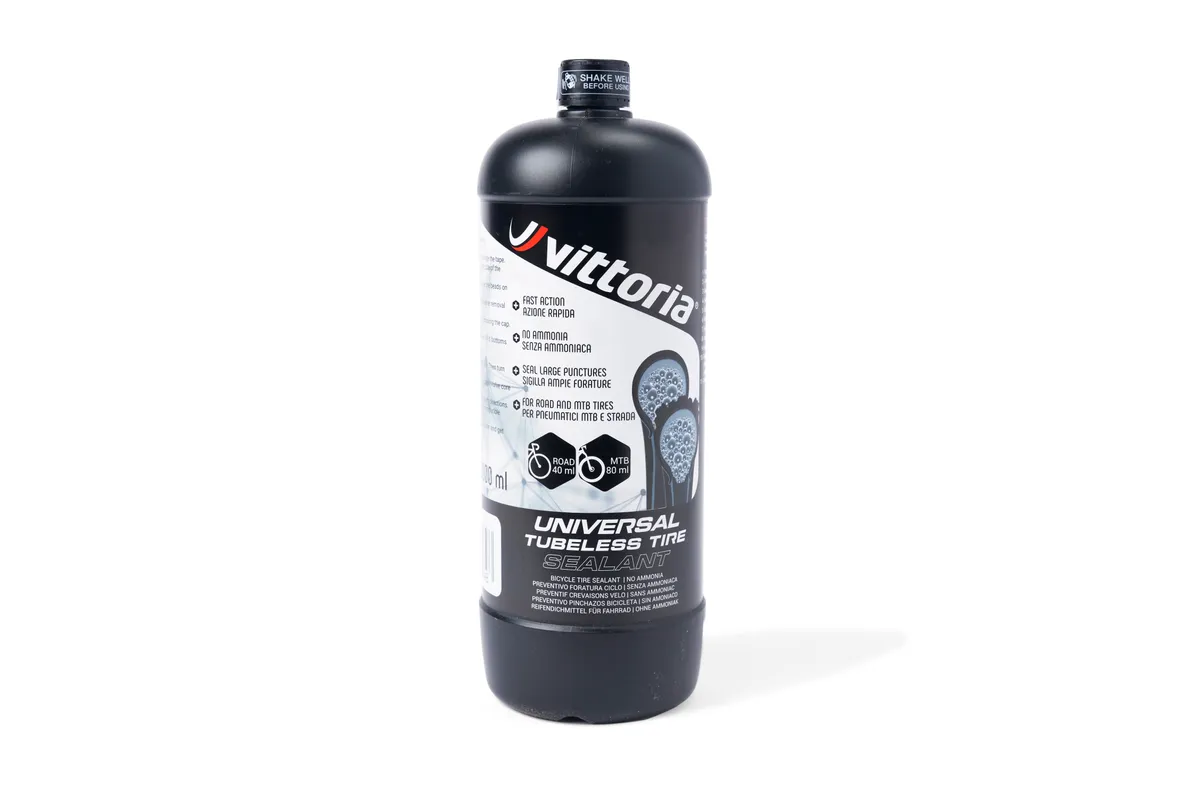
- £19.99/$28/€27/AU$46 as tested (500ml)
The Vittoria Universal Tubeless Tyre Sealant performed well, sealing a thin 8mm-long knife incision having already sealed two separate attacks with a large, sharp screwdriver.
Suitable for road and mountain bike setups, according to Vittoria, the Universal Tubeless Tyre Sealant is latex- and ammonia-free.
e*thirteen Tire Plasma

- £19.95/$17.95 for one litre as tested
The e*thirteen Tire Plasma is one of the cheapest tubeless sealants we've tested.
It was able to plug up to 6mm holes quickly, with similar pressure loss to Orange Seal Endurance Sealant. It was similarly mid-pack when it came to plugging sidewall holes too.
The e*thireen Tire Plasma must be shaken vigorously then poured immediately for the small particles to get into the tyre.
Although it coated the tyre well and plugged holes quickly, it never completely sealed them. The holes kept leaking.
Hutchinson Protect’air Max
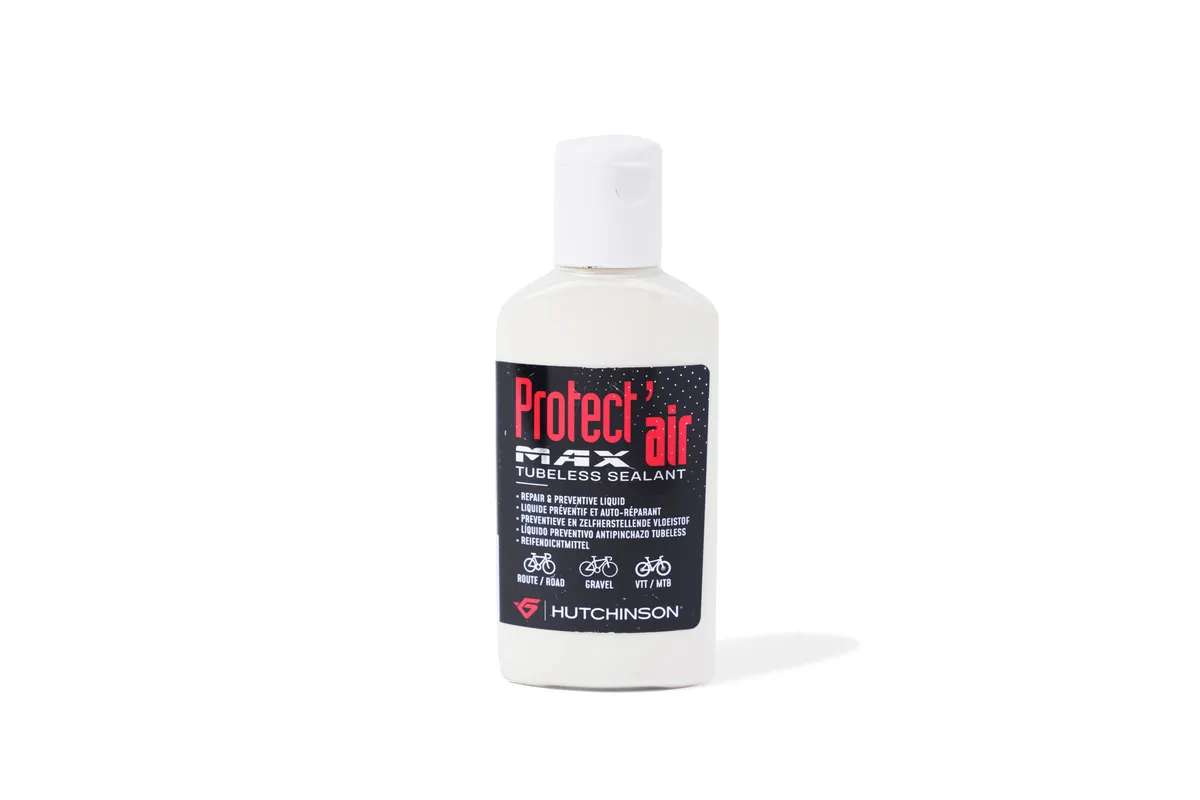
- £7.95/$11/€9.95/AU$19 as tested (150ml)
The Hutchinson Protect’air Max tubeless sealant stood up well to a sharpened screwdriver. Only after five attacks did the tyre pressure noticeably drop.
Knife cuts up to 9mm in length led to little air or sealant leakage, but pin pricks did more damage.
Blows from a pick caused a small pressure drop before the holes sealed quickly.
Hutchinson says the Protect’air tubeless sealant contains latex. A strong ammonia smell emanated from the bottle once opened.
Orange Seal Endurance
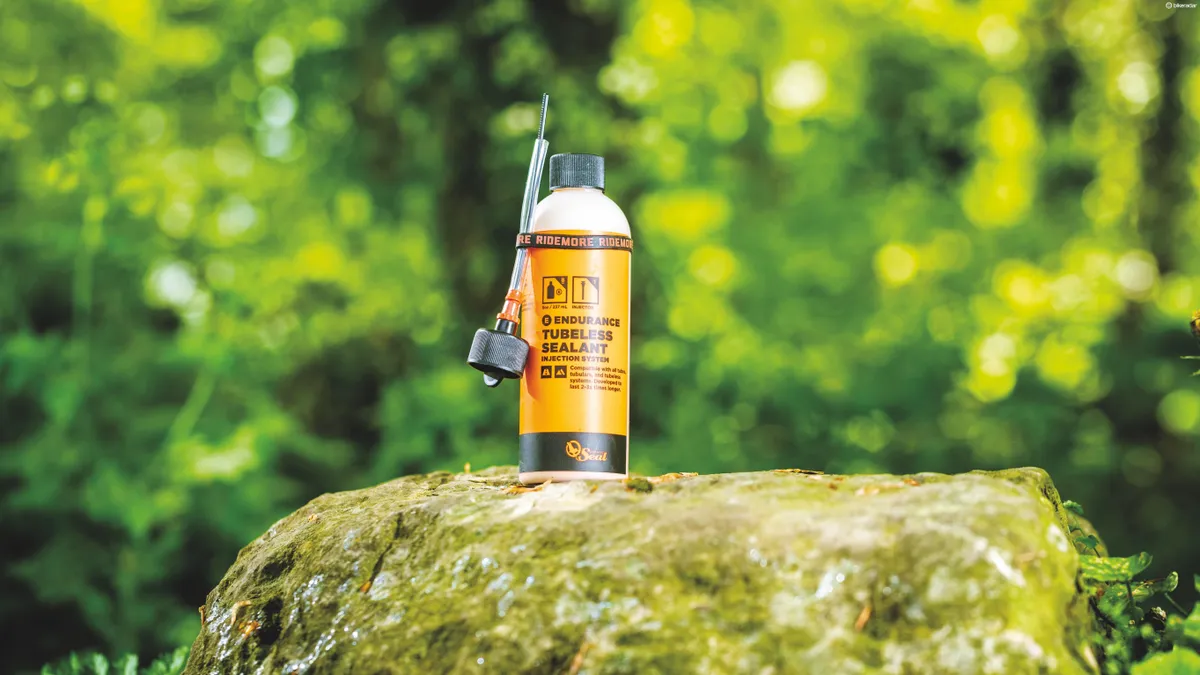
- £16/$16.49 for 237mm (with injector) as tested
We found Orange Seal’s original formula to be one of the most effective solutions for sealing large holes in the past, but it degraded quickly.
This Endurance version is claimed to last up to four months between top-ups. The included valve injector makes topping up the tyre easier too.
Although it plugged sidewall holes well, it couldn’t match the original version when it came to larger holes.
After successfully sealing the hole made by a 6mm screwdriver, the seal broke as it was re-inflated above 20psi.
Schwalbe Doc Blue
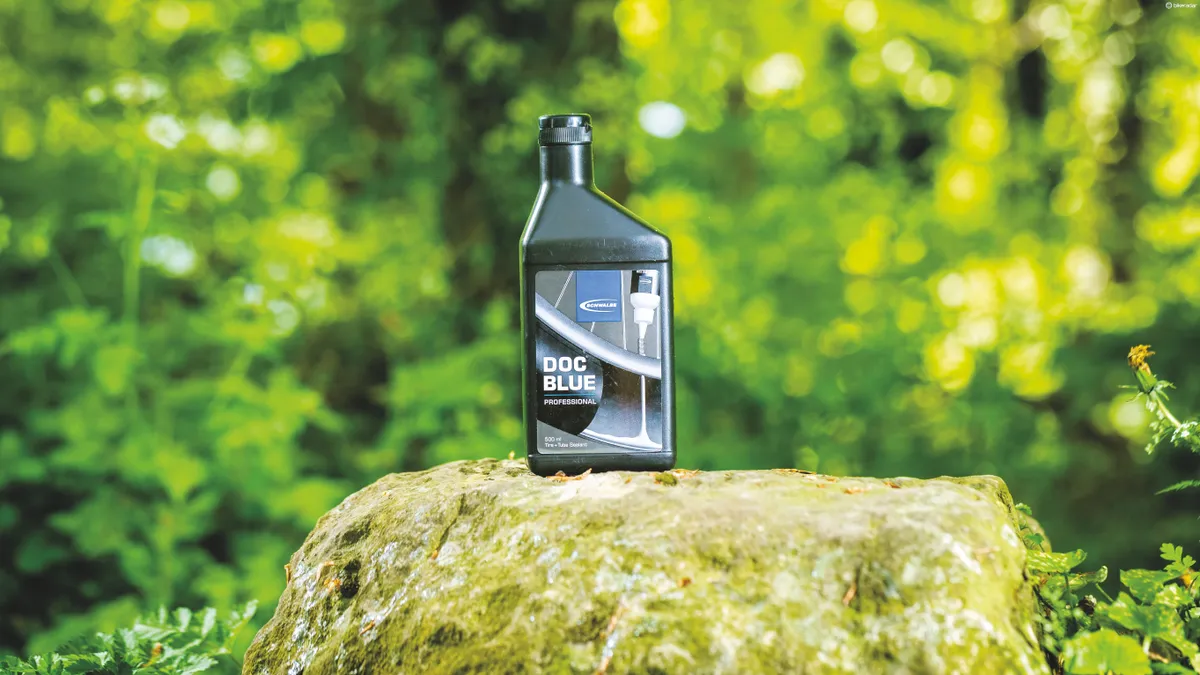
- £21/$25/€22/AU$37 for 500ml as tested
The Schwalbe Doc Blue tubeless sealant is made by Stan’s No Tubes.
While we’re not sure if it’s exactly the same formula, it performs just like the original Stan’s sealant (not the Race Sealant in this list) in our tests.
The only real difference is the blue colour, and the fact an empty 60ml dispenser bottle and a valve-core remover are included, making installation easier.
But it’s considerably more expensive than the original Stan’s solution on which it's based.
Like Stan’s original sealant, it performs well with smaller holes, but doesn’t plug larger ones as well as top performers. The 6mm screwdriver resulted in almost all the air being lost.
Buyer's guide to tubeless sealant
What is tubeless sealant?
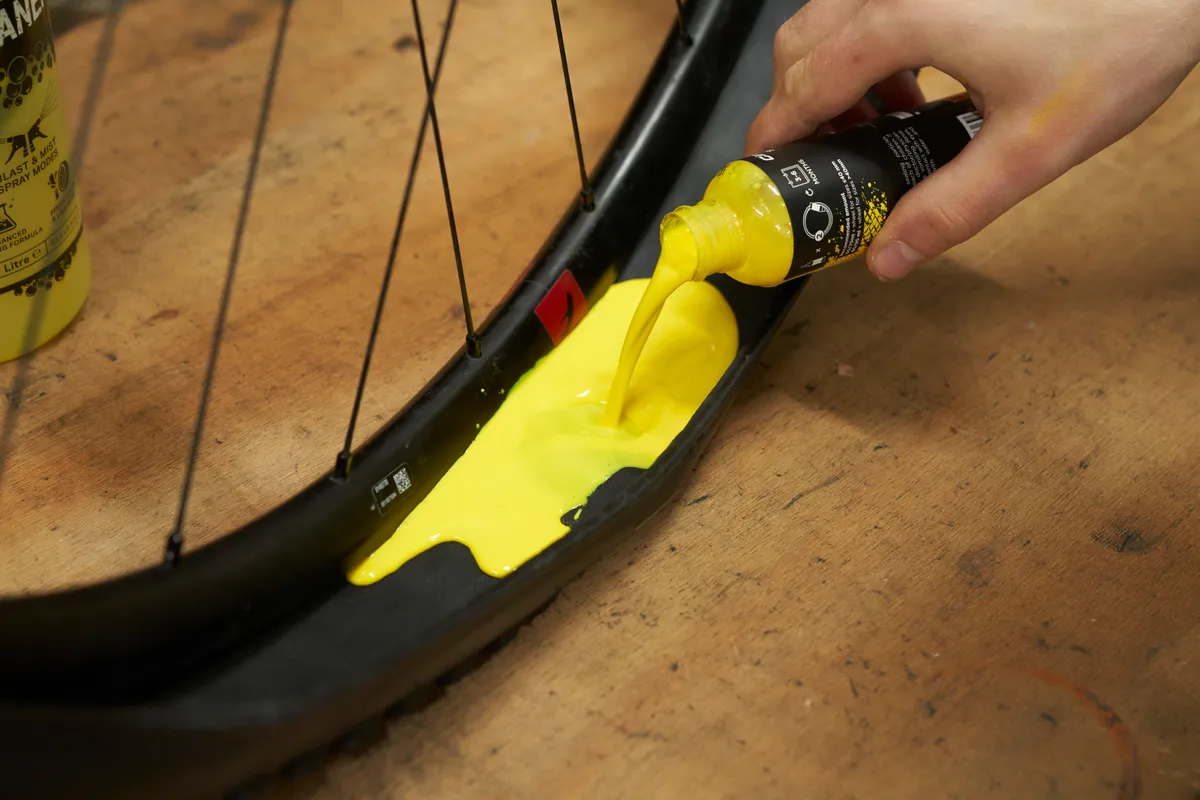
Tubeless sealant is a liquid designed to plug small holes in a tyre’s casing, thus preventing punctures. It works a bit like blood clotting to prevent bleeding. There are two main types: latex-based and latex-free.
Latex-based sealant
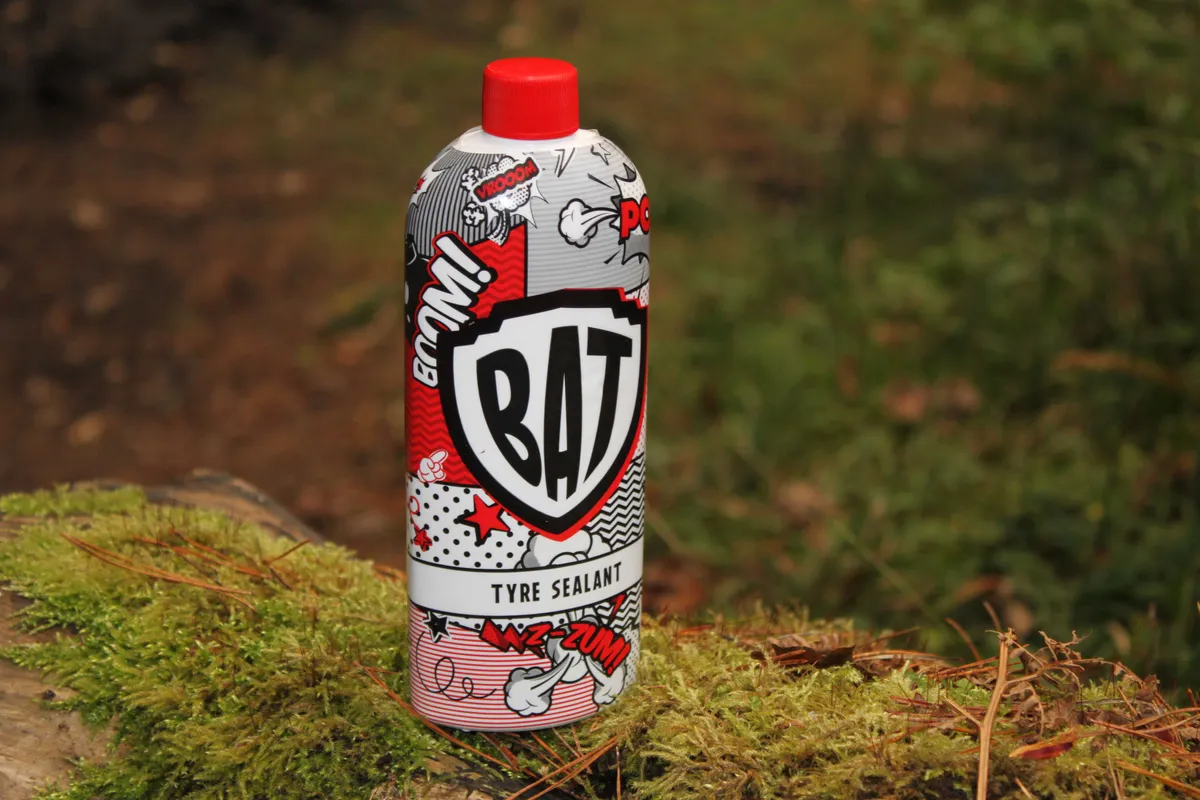
Most sealants use the coagulating properties of natural latex to clog punctures. Latex is a dispersion of polymers (long-chain molecules) in either water or a water-based solution of ammonia. Inside a hole in the tyre, the air pressure drops and there is a rush of air. This causes the water/ammonia solution to evaporate, leaving the latex molecules to coagulate (knit together), plugging the hole.
The problem with latex-based sealants is that, as air is pumped in and out of the tyre during normal use, the water/ammonia solution slowly evaporates. This causes the latex to coagulate inside the tyre carcass, resulting in a dried-up mess, which after a few months, won’t seal punctures.
Most latex-based sealants also contain small particles, such as glitter or small fibres, suspended in the liquid.
These help to provide a surface for the latex to coagulate around (like how snowflakes form around a particle of dust), thereby helping it seal holes more quickly and effectively. The downside is these particles accelerate the rate at which latex coagulates inside the tyre, reducing its lifespan.
Latex-free sealants
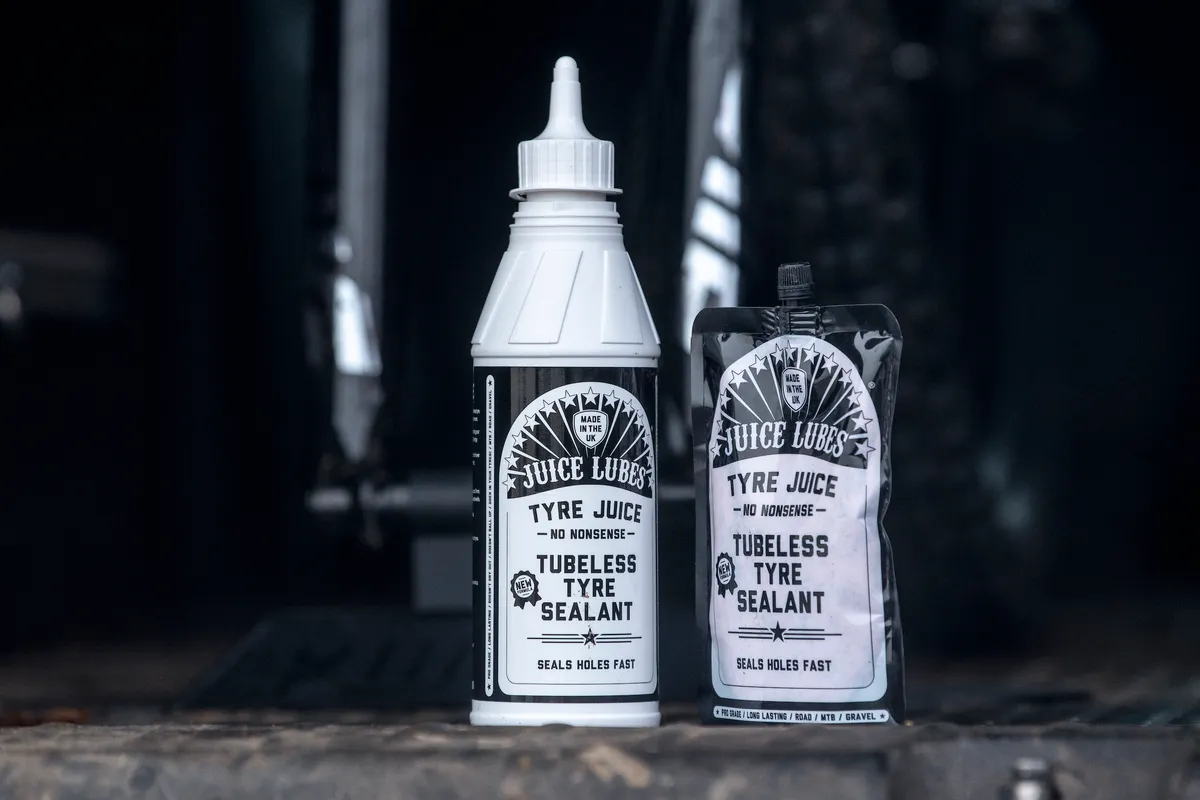
These have no latex and no chemical change occurs inside the tyre. Instead, they rely on a more viscous (thicker) liquid, containing a wider variety of sealing particles, designed to physically plug punctures.
These last far longer inside the tyre, but, in our experience, don’t plug punctures as well.
Road, gravel and mountain bike tubeless sealant
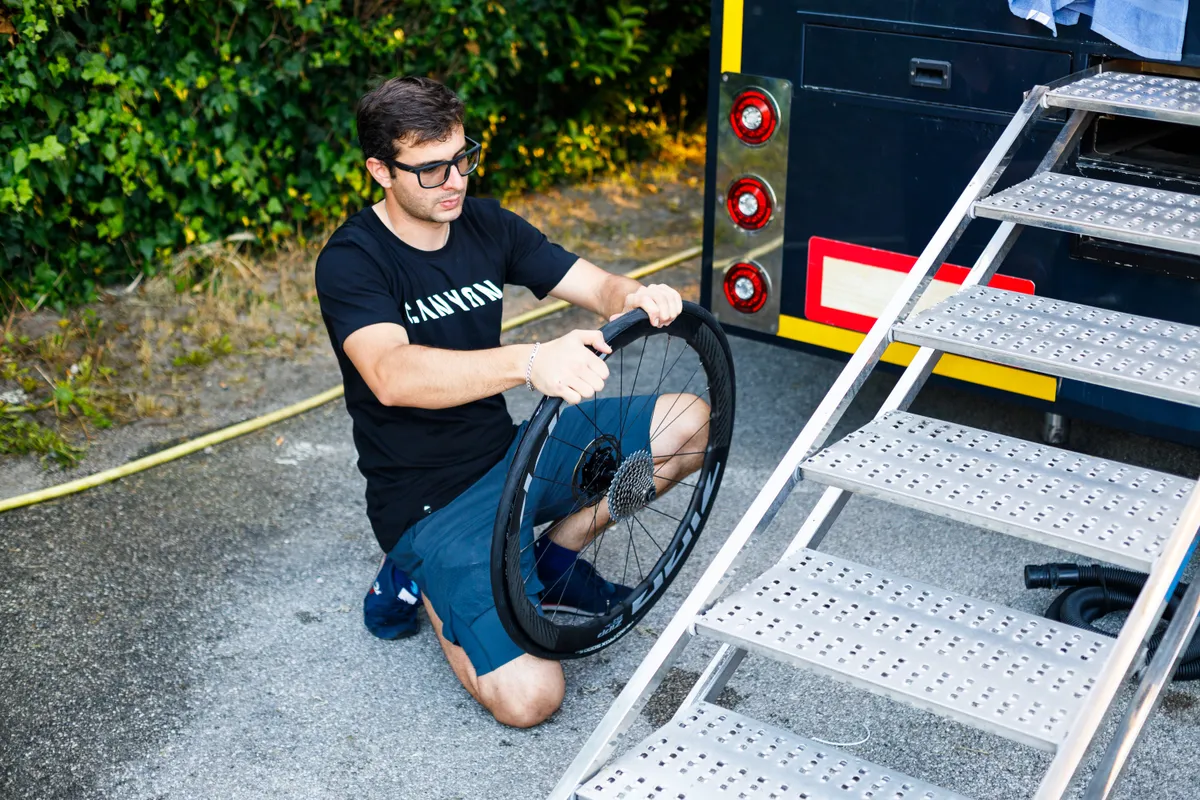
The majority of tubeless sealants we've tested here are suitable for use in road, mountain and gravel bike tyres.
Pirelli has released specific road, gravel and mountain bike tubeless sealants, but this is the exception, not the rule.
You'll just have to adjust the dosage to account for the different wheel and tyre sizes, according to the manufacturer's instructions.
For example, Stan's No Tubes recommends 118ml to 148ml for various mountain bike wheels sizes. The brand says 59ml of tubeless sealant suffices for everything from road bike wheels to 650b gravel wheels.
How we tested
The problem with real-world testing is that it’s impossible to test each sealant in the same conditions.
The tyre, temperature and the type or position of the puncture all affect the sealant’s ability to seal.
Therefore, we performed comparative tests in our workshop, controlling the variables as much as possible.
In the first test, we used two Michelin Wild Grip’R 2 tyres, and tested three sealants with each tyre.
After we’d finished testing a sealant, we cleaned the tyre thoroughly with water and rags, plugged the existing holes in the tyre with tape, and tested the next sealant on a different section of tyre.
To begin, we poured 100ml of each sealant into the tyre (27.5x2.3in) and inflated it to 30psi, ensuring the tyre was thoroughly coated.
We then stabbed the tyre on the outer casing, between the tread blocks, using a pick and different-sized screwdrivers.
We measured how much air was lost from our 30psi starting point.
In our second test, our workshop manager Will Poole used a Vittoria Rubino Pro Graphene 2.0 tyre in a 30mm width.
He set up the tyre with each sealant and inflated it to 80psi.
He then took turns with pins, a flat-headed screwdriver, a pick and a sharp knife to stab the tyre.
Will recorded the number of blows the sealant withstood and the size of the incisions it sealed.
After switching sharp implements, he reinflated the tyre to 80psi. Between sealants, Will cleaned and patched the tyre.
The tubeless sealants that sealed the biggest holes, or held the most pressure with a given size of hole, were deemed to perform the best.
We also considered the cost per unit volume, ecological impact and presence of allergens when scoring the tubeless sealants.

